How to Identify Common Lawn Care Problems in Austin, TX
BY NICKI DESTASI | JUNE 30TH, 2018 | AUSTIN, LAWN CARE, TEXASA healthy lawn is good for your soul, but lawn care problems are not. Austin is home to Lady Bird Lake, live music, and food truck tacos, but it also has compacted soil, high temperatures, and minimal rain. These factors cause problems that devastate a healthy lawn. Read on to discover how to identify common lawn care problems in Austin and how to fix them.
In this article, we’ll discover:
Common Lawn Care Problems in Austin
From dollar spot to drought, Austin has more than its fair share of lawn problems. Learn how to identify and solve common lawn problems in Austin.
1. Incompatible Grass Type
With the high temperatures and minimal rainfall, warm-season grasses thrive best in Austin lawns. However, not all warm-season grass types can handle compacted soils. If you’re having trouble growing a thick lawn, consider switching your grass type.
The best grass types for Austin lawns are:
Bermudagrass
Bermudagrass is light-green and fine-textured. This fast-growing grass is used in home lawns, sports fields, and parks. It has excellent drought tolerance, high traffic tolerance, and low to moderate disease potential. However, it has low shade tolerance and is moderately high maintenance.
St. Augustinegrass
St. Augustinegrass grows quickly, creating a thick, coarsely textured, dark green lawn. Its nickname is “carpet grass” thanks to its dense growth habit. It has good drought tolerance and high shade tolerance but is more vulnerable to chinch bugs than other warm-season cultivars. St. Augustinegrass has low traffic tolerance and high disease potential.
Buffalograss
Buffalograss is soft, fine-textured, and gray-green or blue-green. Although slow-growing, it won’t invade flower beds like many fast-growing grass types. It has excellent drought tolerance, very low water needs, and goes dormant later than other warm-season grass types. The downside is it has low traffic and shade tolerance.
Zoysiagrass
Zoysiagrass is emerald green with a medium to fine leaf texture. It grows quickly and stays green longer than most warm-season specimens. It has low to moderate disease potential, great drought tolerance, and moderate to high traffic tolerance. However, it recovers slowly and requires moderate maintenance
2. Lawn Diseases
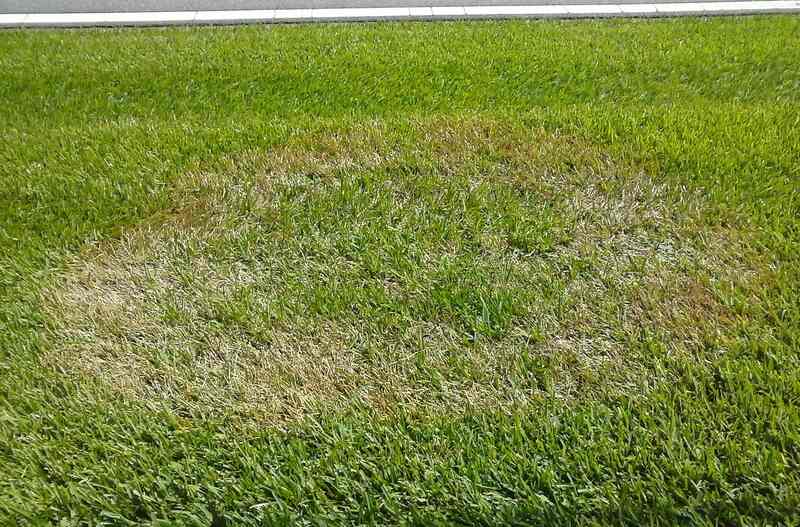
Photo Credit: Scot Nelson / Wikimedia Commons / CC0
Even the healthiest lawns can develop a disease. Once a lawn disease takes hold, the problem continues to worsen until the disease is eradicated. Three factors converge to cause lawn disease:
- Grass Type: All grass types can be affected by lawn diseases, but some are more disease resistant than others.
- Disease: Most lawn diseases are fungal, but a few bacterial and viral diseases can cause big problems. They’ll typically arrive via the soil, the wind, or an animal.
- Environment: To infect a lawn, diseases need a wet leaf and a warm environment. They prefer temperatures above 70 degrees Fahrenheit during the day and 55 degrees at night.
Brown Patch
Brown patch causes a smoke ring, resembling a grayish-purple-bordered ring. This fungal disease doesn’t affect grass roots but will infect the blades and leave brown patches in your lawn. It develops with a wet lawn and nighttime temperatures above 70 degrees Fahrenheit. Brown patch affects bermudagrass, St. Augustinegrass, Zoysiagrass, and buffalograss.
Take All Patch
Take all patch is a fungal disease that is most active during moist spring’s moderate temperatures. This devastating, hard-to-control disease begins with yellowing leaves and darkening roots. Soon, turf thins as the roots and stolons turn black and die. Take all patch effects bermudagrass, St. Augustinegrass, Zoysiagrass, and buffalograss.
Dollar Spot
In the spring through fall, dollar spot present as round, white or tan, silver dollar-sized circles. This fungal disease is active when the grass is wet for 10 to 12 hours daily and the nights are above 50 degrees Fahrenheit. Drainage, mowing, and foot traffic spread dollar spot. This disease affects most grasses, including bermudagrass, St. Augustinegrass, Zoysiagrass, and buffalograss.
Gray Leaf Spot
During spring and early summer, gray leaf spot develops on St. Augustinegrass and buffalograss when the temperature is warm, and the grass is moist, especially in shaded areas. The fungus causes oval, tan lesions with brown or purplish borders on the grass blades. When the grass eventually dies, the turf appears burned or scorched.
St. Augustine Decline (SAD)
St. Augustine Decline, or SAD, is an incurable viral disease that only affects St. Augustinegrass and centipedegrass. At first, SAD resembles nutrient deficiency or insect issues. The grass blades appear spotty, yellow, and weak, and the stolon growth will slow. When fertilizers and fungal treatments do not help your declining turfgrass, it’s probably SAD.
Rust
Rust prefers warm, humid conditions and grass stressed by drought, low nitrogen, and shade. This fungal disease begins as small orange to reddish-brown flecks that enlarge to form small, oval blisters containing powdery orange to reddish-brown spores. The blisters turn black, and the leaf dies. Rust affects Zoysiagrass, bermudagrass, and St. Augustinegrass.
The Solution
The majority of lawn diseases are fungal, so using a fungicide is the best solution. Be sure to follow the manufacturer’s directions. Too much fungicide burns grass, and too little is ineffective.
If you prefer a natural solution, there are a few options, including:
- Baking soda
- Dish soap
- Hydrogen peroxide
- Vinegar
- Lemon juice
3. Pests
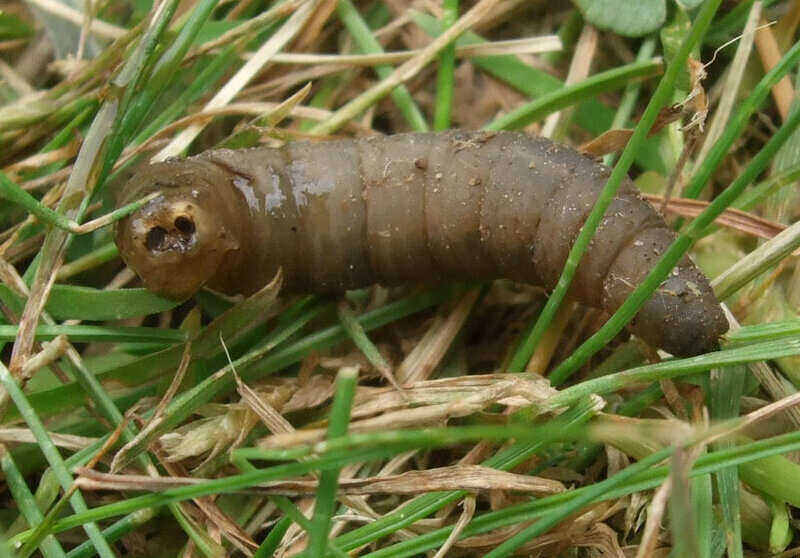
Photo Credit: Simon / Flickr / CC BY 2.0
Pests are a nuisance and bad for lawns. There are two types of pests in Austin that cause lawn damage: insects and wildlife.
Insects
Bermudagrass and St. Augustinegrass are more pest-prone while Zoysiagrass and buffalograss are more resistant. If a problem pops up, act fast before the pests spread, causing irreversible damage.
Fire Ants
Fire ants damage lawns by tunneling and creating ant hills. Their mounds can grow up to 18 inches tall. Apply fire ant bait, following the manufacturer’s directions. Sometimes the colony will abandon the mound and create a new one a few yards away. If this cycle continues, consider hiring a professional to handle the problem.
Grubs
Grubs are small, fat, white, c-shaped beetle larvae with burnt orange heads and six legs near the front of their body. Grubs feast on your grass roots, causing brown spots and dead turf. To eliminate them, use a grub-specific pesticide. For a natural method, apply nematodes or milky spores. Regular dethatching and aeration help by limiting their food supply.
Chinch bugs
Chinch bugs are tiny black insects with white wings. They suck the sap from the base and stolons of grass blades before injecting a toxic substance that prevents the plant from transporting water. Without water, patches of your lawn turn yellow and eventually die. In the spring, apply preventive insecticides. In the summer and fall, use targeted insecticides.
Armyworms
Despite the name, armyworms are dark brown caterpillars with white, orange, or yellow stripes. They devour grass blades. Use commercial-grade pesticides to prevent these invaders, and maintain your lawn, as they like dense, thatched, moist areas.
Note: Mow and irrigate your lawn a full twenty-four hours before insecticide applications. It’s best to use a broad-spectrum non-repellent insecticide containing carbaryl or pyrethroid to treat affected areas. Experts advise applying preventative treatments in May and June.
Wildlife
Despite being the 10th largest city in the country, Austin has a surprising amount of wildlife. While it’s lovely to see nature’s friends as you bustle about your day, they can pose problems for your lawn.
Deer
Deer are among the most troublesome animals affecting yards. They eat vegetation such as flowers, young leaves, and broad-leaf weeds. Sprinkling dog or human hair around your lawn helps keep them at bay or try a deer-repellent product found at Lowe’s, Tractor Supply, or other home outdoor retailers.
Climbing Animals: Raccoons, Opossums, etc.
Raccoons, skunks, and opossums tear up lawns looking for insects or places to bury nuts. Keep a close eye on insect problems to restrict the food supply for these animals. Apply capsaicin or mint to repel these invaders. However, note that you will need to reapply after rainfall.
Rabbits
Rabbits love to eat grass, and their concentrated urine causes brown spots. If you notice spots in your area that appear to be mowed down, you may have a rabbit problem. To stop Thumper, spray odors on your grass, like capsaicin, castor oil, or predator urine.
Tunneling Animals: Gophers, Moles, etc.
Not all tunneling animals will eat your plants and grass, but they do destroy your lawn. Moles won’t eat your lawn, but they love digging for bugs. Voles and gophers feast on grass and roots. Use traps, bait, or repellent. For a natural method, try peppermint oil, castor oil, coyote, cat, and dog urine, garlic, coffee grounds, fish oil, or scented dryer sheets.
Cats and Dogs
Cats and dogs dig and urinate on lawns and flower beds, causing brown spots. To keep cats and dogs off your lawn, try repellent, motion-activated sprinklers, or ultrasonic devices. For a more natural solution, try using citrus, coffee grounds, vinegar, pipe tobacco, blood meal, or essential oils.
4. Weeds
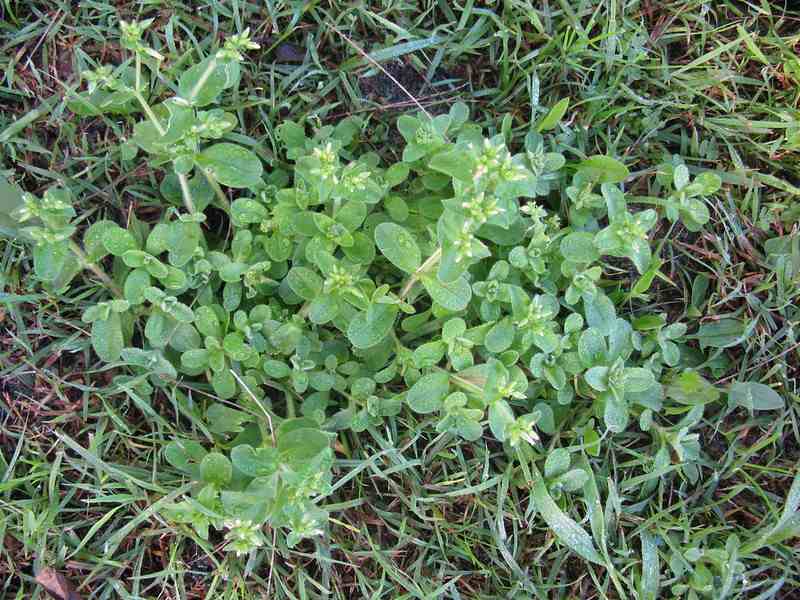
Photo Credit: Harry Rose / Flickr / CC BY 2.0
Weeds love an unhealthy lawn and signify a deeper problem. To make matters worse, weeds steal nutrients, water, and sunlight from your grass, all while creating an ideal environment for pests and diseases. One of the best ways to control weeds is to maintain a healthy lawn.
There are two ways to control weeds: chemical treatments and hand pulling. Often, hand pulling is the safest way to remove weeds. Identify the type of weed before selecting your removal method to ensure proper elimination.
Follow these weeding tips:
- Use pre-emergent herbicides to prevent weeds
- Use targeted post-emergent herbicides when weeds crop up
- Spray herbicides sparingly and as directed
- Hand-pull weeds or use a dandelion fork to remove broadleaf weeds with taproots
- Pull your weeds by hand instead of using chemical treatments when in doubt
Weeds are everywhere, but some are a bigger pain in the grass than others. Here are a few particularly nasty Austin weeds.
Annual Sow Thistle
Annual sow thistle grows everywhere, including roadsides, lawns, and gardens. Like dandelions, they have yellow flowers that turn into white, fluffy seeds that attract and harbor pests.
Chickweed
Chickweed is challenging to remove. One plant has over 25,000 seeds that stay viable for ten years. It grows in a thick mat and is identifiable by its small, smooth, oval-with-a-point leaves and clusters of tiny white flowers. Chickweed sucks the nitrogen from the soil, depleting resources.
Nutsedge
Nutsedge is often declared the world’s worst weed. It resembles grass but grows twice as fast. Its roots are tubers and rhizomatous that grow 6 to 12 inches deep. Nutsedge is horrible because if you rip out the plant, the tubers are left behind to create new plants. To eliminate nutsedge, apply multiple treatments.
Smooth Crabgrass
Although there are 35 crabgrass varieties, smooth crabgrass thrives in Austin’s warm weather. It grows everywhere. Smooth crabgrass is low-growing with dull green leaves. It tolerates mowing and produces seeds, making it difficult to eliminate.
Spotted Surge
Spotted spurge is a prostrate-growing, groundcover plant. It has small, dark green, oval leaves with a dark red to purple spot in the middle. Spotted Surge is a skin irritant to some people and toxic to some animals.
5. Compacted Soil and Thatch
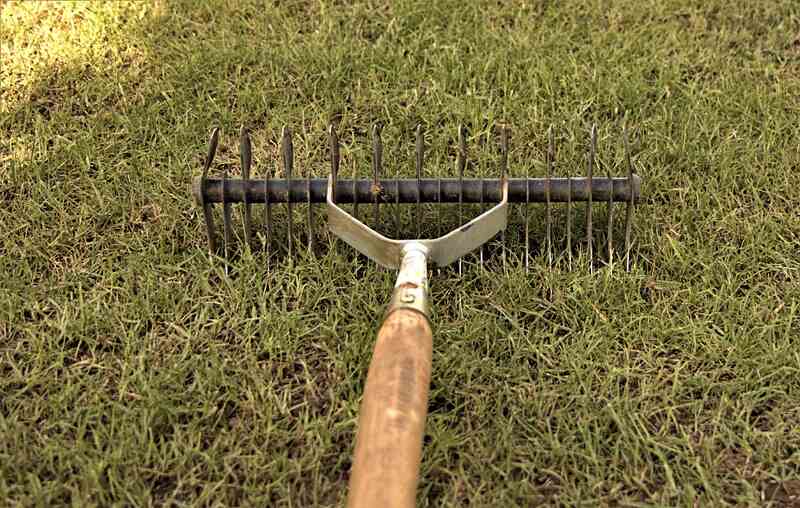
Photo Credit: Pixabay
Compacted soil and thatch will strangle a lawn, but they also attract pests and disease. Unfortunately, Austin’s soil is prone to soil compaction and thatch.
Compacted Soil
Healthy soil has pore space that allows water, oxygen, and nutrients to filter to roots. Compacted soil is pressed together, reducing pore space and disallowing roots to grow. Compacted soil stunts and starves grass. It also reduces beneficial earthworm activity, which boosts fertility, breaks down thatch, and improves soil structure.
Core aeration relieves compacted soils. It is the process of removing plugs from the soil to allow air, water, and nutrients to penetrate your lawn. Plugs are about 2 to 3 inches long, three-quarter inches wide, and 3 to 4 inches apart, allowing roots to grow deeply, creating a stronger, more robust lawn. You can purchase or rent an aerator from a home improvement store.
Thatch
Thatch is a combination of dead and living roots. You get thatch build-up when turf produces grass faster than it is broken down. Some thatch is good because it insulates the soil and retains water. But thatch over a half inch will reduce water and nutrient absorption, starving your grass.
Many Austin lawns are prone to thatch build-up, because:
- Clay soil: Austin’s clay soil lacks thatch-decomposing organisms and is prone to compaction.
- Grass types: Warm-season grasses are aggressive growers, causing increased thatch.
- Pesticides: Pesticides reduce earthworm populations, which stimulate microbial activity. Fertilization: Proper fertilization is good for grass health, but excessive use creates thatch.
Thatch-prone grass types include:
- Bermudagrass
- Zoysiagrass
- Centipedegrass
- Texas Bluegrass
To get rid of thatch, you have a few options. Liquid dethatching increases enzymes and thatch-eating organisms. A dethatching rake works for mild thatch, but if you have moderate build-up or more, use a power-driven dethatcher.
6. Drought
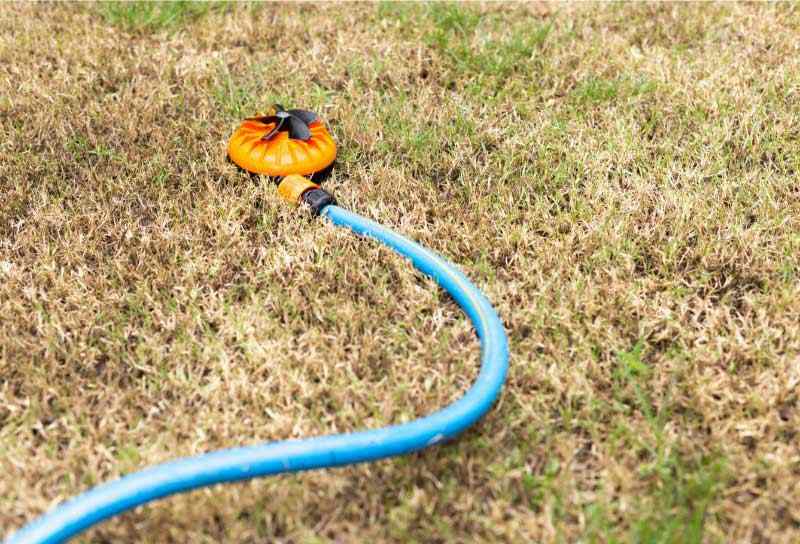
Photo Credit: Bignai / Canva Pro / License
Being an Austinite, you know that summers are hot and dry, but sometimes we get even less rain than normal. Like all living things, your grass needs water to survive, so restricted water access causes stress. Grasses turn brown, go dormant, and in extreme cases, die.
Here are some best practices for lawn care during a drought:
- Fertilization: Keep your planned fertilization schedule. However, do not fertilize if water is unavailable or if your grass is dormant.
- Mowing: Mow as needed, making sure to mow at the correct height for your grass type.
- Irrigation: Follow Austin’s water restrictions. Whenever possible, water your lawn twice weekly, aiming for 1 to 2 inches of water. An automatic irrigation system is your best option for water efficiency.
7. Improper Watering
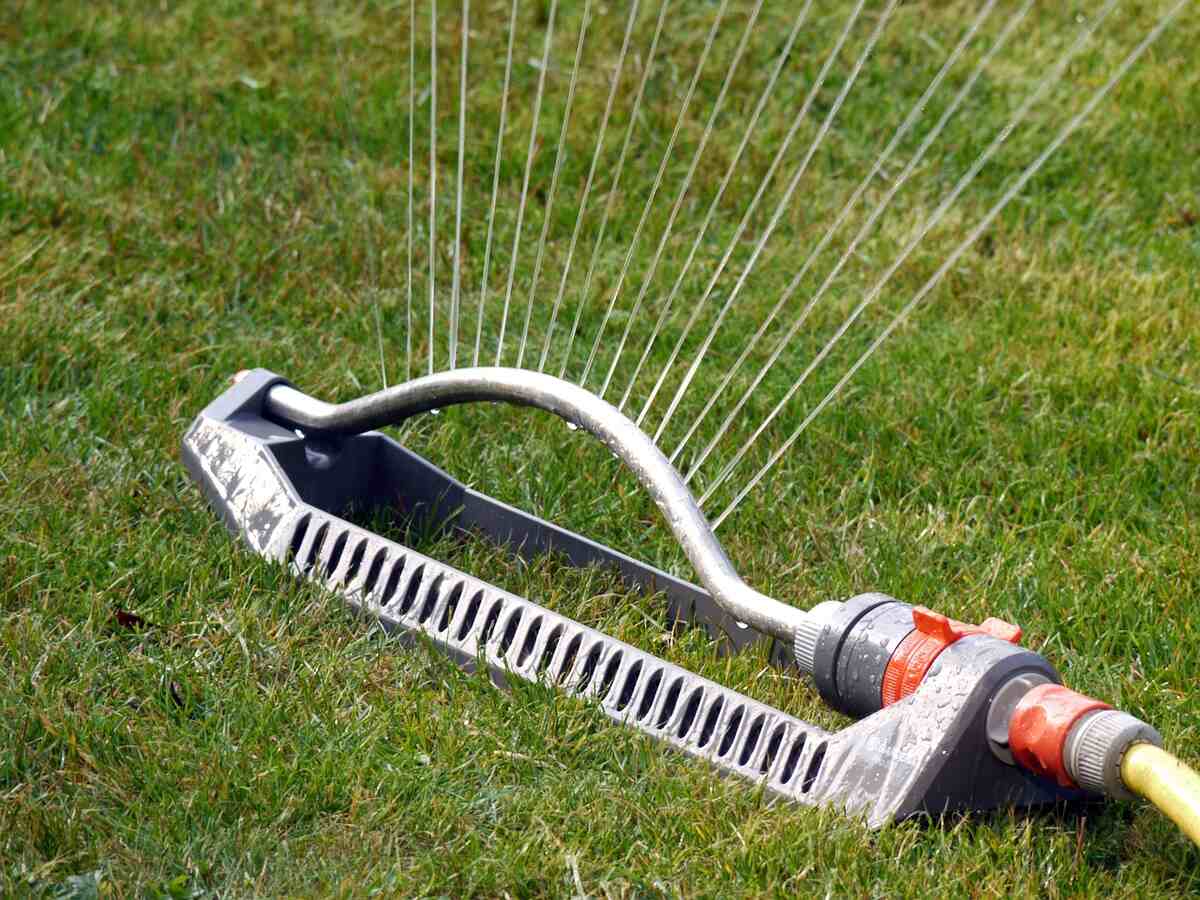
Photo Credit: Pixabay
Watering practices have a powerful effect on your lawn’s health. Your grass and native plants are adapted to Austin’s USDA Hardiness Zone, 8, but they still face high temperatures, drought, and water restrictions. Consider investing in an automatic irrigation system that allows you to program it for your lawn’s needs.
Follow these tips to get the most out of your watering practices:
- Water on designated days determined by your address
- Water 1 to 2 inches per week, including rainfall.
- Soak your lawn once or twice a week instead of short, daily watering
- Water 4 to 6 inches deep into the soil to help plants and grass develop deep roots
- Water in the morning between 4 a.m. and 8 a.m. to limit evaporation and fungal growth
Follow the water recommendations for common Austin grass types:
- Bermudagrass: Water twice weekly for 15 minutes for a total of 1 to 1.25 inches of water per week.
- St. Augustinegrass: Water twice weekly for 15 minutes equaling 1 inch per week.
- Zoysiagrass: Water twice weekly for 15 minutes for a total of 1 inch per week.
- Buffalograss: Water twice weekly for 15 minutes for a total of 1 inch per week.
8. Improper Mowing
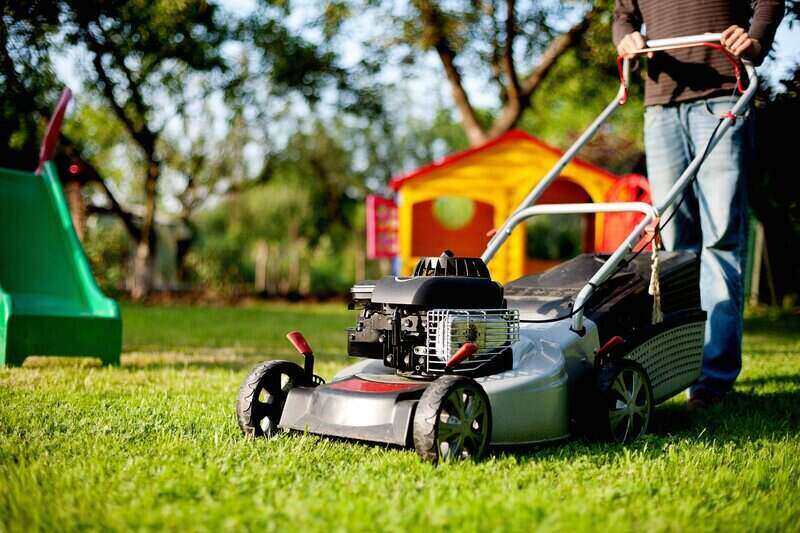
Photo Credit: Pixabay
Improper mowing causes brown, damaged turf. Proper mowing is one of the best ways to maintain a healthy lawn. This means mowing at the right time, the right frequency, and the right height.
Follow these mowing tips to maintain a healthy lawn:
- Don’t mow too short. It leaves your lawn vulnerable to weeds, scorching, and dormancy.
- Sharpen mower blades. A dull blade rips the grass instead of slicing it, causing brown tips.
- Don’t mow more than one-third of your grass’ length.
- Mow regularly to encourage thick growth.
- Leave grass clippings on the lawn.
- Never mow wet grass. It rips the grass blades and clogs your mower.
- Don’t mow in a drought. High heat and low water cause dormancy.
- Wait to cut grass after fertilization. Grass needs time to absorb nutrients.
- Vary your mowing pattern.
- Never mow a diseased lawn. Mowing flings the diseased clippings around your healthy lawn, spreading the sickness like the flu.
Knowing when to mow is also critical for a healthy lawn.
- Cut your lawn mid-morning, between 8 a.m. to 10 a.m. This allows moisture to evaporate, reducing the risk of disease.
- Don’t mow before 8 a.m. The ground is still wet from the morning dew. Mowing wet grass tears grass blades, causing brown tips and increasing the risk of disease.
The frequency of mowing changes with the seasons. Growth rates vary by grass type, but here’s an approximate mowing schedule by season:
- Spring: Once a week
- Summer: Every 5-7 days, but some grasses may need more frequent sessions.
- Fall: About once a week, but the frequency drops as winter looms closer.
- Winter: Rarely, if at all.
Grass type is a significant factor for mowing best practices. These are the recommended summer mowing heights and frequencies for popular Austin grass types:
- Bermudagrass: Mow weekly to a height of 1 to 2 inches.
- St. Augustinegrass: Mow every 7 to 10 ten days to a height of 2.5 inches.
- Zoysiagrass: Mow every 5 to 7 days to a height of 1 to 2 inches.
- Buffalograss: Mow every 7 to 10 days to a height of 2 to 3 inches.
9. Incorrect Fertilization
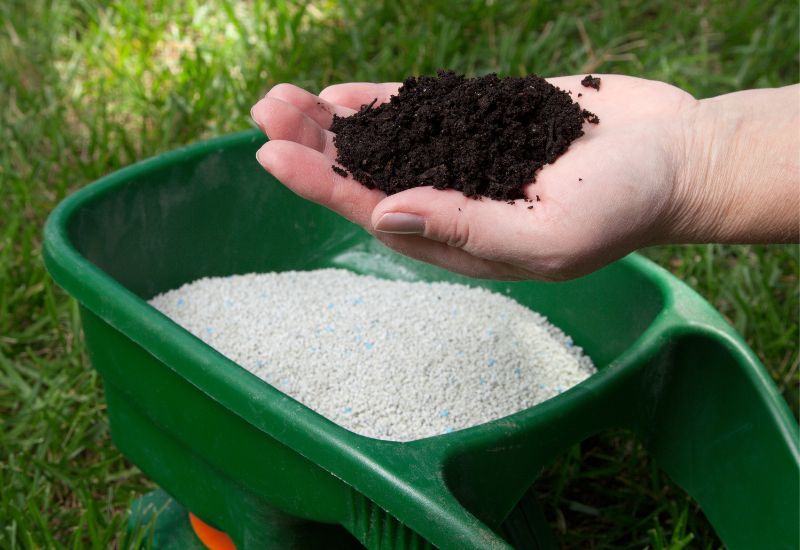
Photo Credit: evgenyb / Canva Pro / License
Before you start spreading fertilizer, be sure to understand your soil.
Austin has three ecoregions: the Edwards Plateau, the Blackland Prairies, and the Post Oak Savannah Floodplains. Each ecoregion has a different soil type:
- Edwards Plateau: Located in the western half of Austin; consists of large amounts of limestone and clay; prone to runoff.
- Blackland Prairie: Located in Northeast and Southeast Austin; consists of clay and very little rock; wet soil; feels like pottery clay; dry soil resembles concrete
- Post Oak Savannah Floodplains: Located in East Austin; consists of loose soil; has difficulty retaining moisture; prone to flooding
Other factors that affect soil quality include:
- Water and wind erosion
- Vegetation, including grass type, trees, and Austin native plants.
- Construction, both old and new
- Poor watering, pesticide, and fertilization practices.
Knowing your soil type is essential. Experts recommend getting your soil tested every 1 to 3 years. Once you receive your results, plan a fertilization schedule.
Most lawns need fertilization, but too much will burn the grass. Here are a few fertilizing tips to help you feed your lawn without causing damage:
- Select the fertilizer based on your soil results and grass type
- In the spring, fertilize after the second or third mow
- Irrigate after applications to help the nutrient absorption
- Never fertilize a dormant lawn
The average grass needs about 0.5 pounds of nitrogen per 1,000 square feet of lawn, but each grass type differs. Here are the typical fertilization needs for common Austin grass types:
- Bermudagrass: Apply 0.5 to one pound of nitrogen per 1,000 square feet monthly
- St. Augustinegrass: Apply 2 to 4 pounds of nitrogen per 1,000 square feet of lawn annually
- Zoysiagrass: Apply 0.5 to one pound of nitrogen per 1,000 square feet of lawn monthly
- Buffalograss: Low to no fertilization requirements; apply up to 2 pounds of nitrogen per 1,000 square feet of lawn annually.
10. Yellow, Thinning, and Patchy Grass
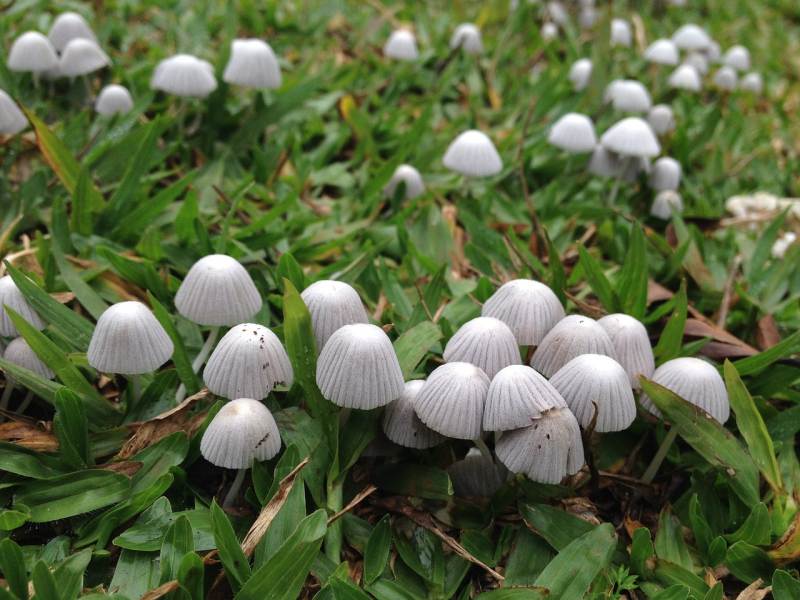
Photo Credit: Pixabay
The list of problems a lawn can face is as long as a child’s wish list to Santa. Along with the common lawn problems in this article, lawns can face many more challenges, including:
- Moss
- Algae
- Mushrooms
- Shade stress
- Iron chlorosis
All of these problems put stress on or kill healthy turfgrass, leaving you with a yellowing, thinning, or patchy lawn.
To solve yellow, thinning, or patchy grass, you first need to address the underlying problem. Whether it’s grubs or brown patch, solve the problem before beginning repair. To repair, remove dead grass, apply grass seed, and then water and fertilize as needed. If the underlying problem is the soil, address those needs before planting fresh sod or seed.
Many lawn problems that Austin faces can be avoided with routine maintenance. For more information on how to care for your turf, check out our comprehensive guide to summer lawn care in Austin.
FAQ About Common Lawn Care Problems in Austin
Yes, lawn care chemicals can be dangerous. Herbicides and pesticides were designed to kill insects and broadleaf weeds, and they can be harmful to humans and pets if used incorrectly. However, the EPA maintains that lawn care products used according to the manufacturer’s directions are safe.
However, some studies have shown that some lawn care products can cause health problems. Round-up, for example, has lost multiple lawsuits, and one of its products was banned in France. According to the World Health Organization, the IARC classified glyphosate–many herbicide’s active ingredient–as “probably carcinogenic to humans.”
Regular lawn care should begin at the very beginning of the growing season. In Austin, the growing season starts in February or March, depending on temperatures and the weather.
Yes and no. Some experts cite multiple reasons why lawns are bad for the environment, while others tout their benefits. Here are the environmental pros and cons of home lawns:
Pros
• Lawns are carbon sinks, lowering carbon dioxide and cooling the air
• They prevent erosion and reduce flooding
• Improves water and soil quality
• Reduce noise and light reflection
Cons
• Gas-powered equipment: EPA says 5% of all air pollution comes from lawnmowers
• Synthetic fertilizers: Runoff pollutes local groundwater and other aquatic ecosystems, creating a spike in toxic algae. Soil microbes turn additional synthetic fertilizer into nitrous oxide gas, the third most abundant greenhouse gas.
• Fresh water use: In arid climates, lawns use a lot of fresh water, causing groundwater decline and depletion.
Professional Lawn Care Problem Solvers
Having a backyard party-worthy lawn takes a lot of work and constant vigilance, but that’s time away from your family, friends, and hobbies. Instead of breaking your back, let Wikilawn set you up with a local lawn care professional. They’ll take care of your lawn problems and maintenance, so you can get back to making memories with your loved ones.
Main Photo Credit: Harry Rose, Macleay Grass Man / Wikimedia Commons / CC BY-SA 2.0